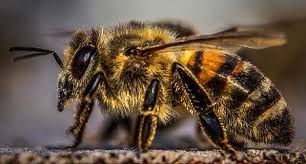Our Blog
Home / Blog
Dancing Language Of Honey Bees

Introduction: In the intricate world of honey bees, communication takes on a mesmerizing form—dance. As we delve into the depths of their hives, we uncover a dance language that transcends the limitations of sound, a silent ballet that orchestrates the harmonious functioning of the entire colony.
The Dance Floor: The stage is set within the hive, and the performers are the worker bees. Through precise movements and rhythmic patterns, these dancers convey vital information about the location of food sources to their hive-mates. This dance language is a remarkable example of nature’s eloquence.
The Round Dance: The first dance on our program is the round dance, a simple but effective routine. The dancer circles around a central point, indicating that the food source is nearby. This dance invites fellow foragers to explore the vicinity and discover the richness waiting to be harvested.
The Waggle Dance: The star of the show is undoubtedly the waggle dance. This intricate routine communicates not only the proximity of a food source but also its direction and distance. By waggling their bodies in specific angles and durations, the dancers provide a map encoded in their movements, guiding their sisters to the treasures outside the hive.
Interpreting the Choreography: Scientists have marveled at the precision of these dances and have deciphered the code embedded within. The angle of the waggle in relation to the vertical axis indicates the direction of the food source concerning the sun, while the duration of the waggle conveys the distance.
The Dance of Democracy: Remarkably, the decision to explore a new food source is democratic. The more intensely a dancer performs her routine, the more likely she is to convince her peers to join the foraging expedition. It’s a dance of democracy that ensures a collective decision for the benefit of the entire colony.
Beyond Communication: The dancing language of honey bees goes beyond mere communication—it reflects the sophistication of their social structure. These tiny choreographers not only share information but also contribute to the resilience and survival of their entire community.
Conclusion: As we witness the enchanting dance language of honey bees, we are reminded of the remarkable ways nature has evolved to ensure the survival of its inhabitants. The silent ballet within the hive is a testament to the ingenuity of these tiny dancers, whose choreography is a dance of life itself.





